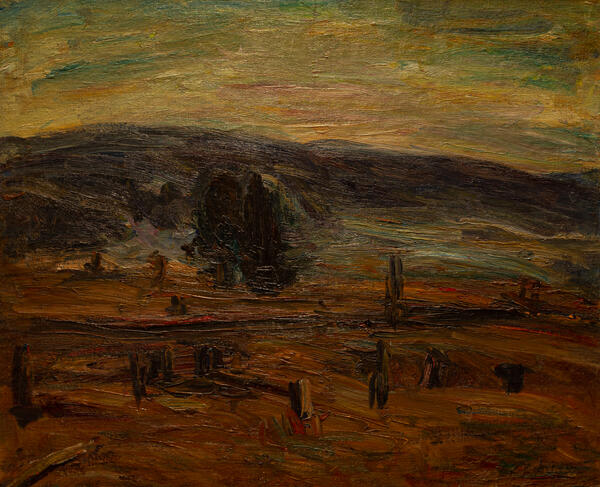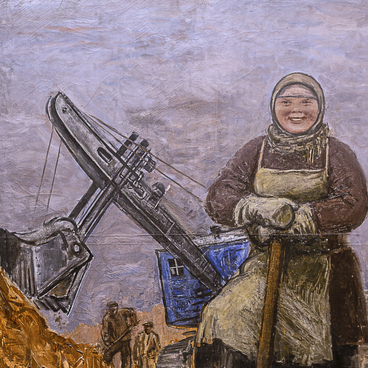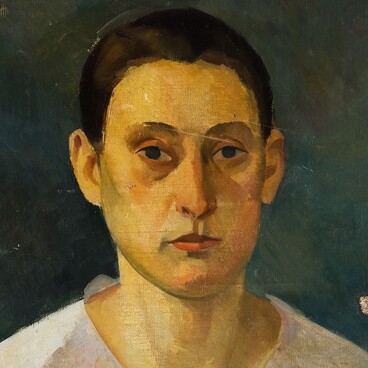In the mid-20th century, the painter Alexander Drevin was undeservingly forgotten for decades to come. In 1938, his life tragically ended: he took part in the activities of the Latvian cultural and educational society ‘Prometheus’, which back then was prosecuted by the Soviet authorities. In the end, he was sentenced to be shot.
His paintings have survived to this day only due to the courage of his wife Nadezhda Udaltsova, who was also a painter. The art expert Valentina Tikhonova said that immediately after Drevin’s arrest, the nanny, who worked for the family, hid his paintings, and later they would be removed from the stretchers and hidden again, this time by Drevin’s wife and son. According to some sources, Udaltsova pretended that those were her works to avoid their destruction.
The painting ‘Valley of the Chusovaya River’ is a part of the so-called Ural collection of Drevin and Udaltsova’s works. They were painted as a result of their creative trips to the Ural region in 1926–1928. In those years, both artists were keen on the landscape genre. They took delight in the gloomy wilderness they encountered along the Chusovaya River.
The brushwork in this painting is quite free, but despite that, the Chusovaya river and its valley can be recognized easily. The “Valley of the Chusovaya River” is performed in the technique called “impasto”, which means “dough” in Italian. This method implies that the paints are applied to the canvas in textured, visible brush strokes, which help to convey a special kind of expressiveness.
The collection of Drevin and Udaltsova’s works was first exhibited in the State Russian Museum in 1928. The paintings received critical acclaim: Nikolay Punin, a famous art expert, wrote in his review that the paintings of Drevin and Udaltsova were
His paintings have survived to this day only due to the courage of his wife Nadezhda Udaltsova, who was also a painter. The art expert Valentina Tikhonova said that immediately after Drevin’s arrest, the nanny, who worked for the family, hid his paintings, and later they would be removed from the stretchers and hidden again, this time by Drevin’s wife and son. According to some sources, Udaltsova pretended that those were her works to avoid their destruction.
The painting ‘Valley of the Chusovaya River’ is a part of the so-called Ural collection of Drevin and Udaltsova’s works. They were painted as a result of their creative trips to the Ural region in 1926–1928. In those years, both artists were keen on the landscape genre. They took delight in the gloomy wilderness they encountered along the Chusovaya River.
The brushwork in this painting is quite free, but despite that, the Chusovaya river and its valley can be recognized easily. The “Valley of the Chusovaya River” is performed in the technique called “impasto”, which means “dough” in Italian. This method implies that the paints are applied to the canvas in textured, visible brush strokes, which help to convey a special kind of expressiveness.
The collection of Drevin and Udaltsova’s works was first exhibited in the State Russian Museum in 1928. The paintings received critical acclaim: Nikolay Punin, a famous art expert, wrote in his review that the paintings of Drevin and Udaltsova were



